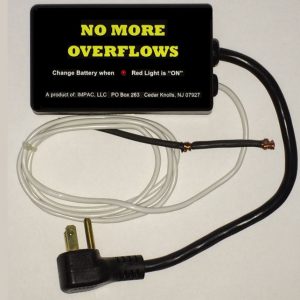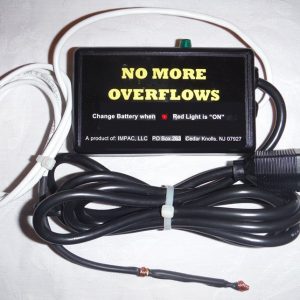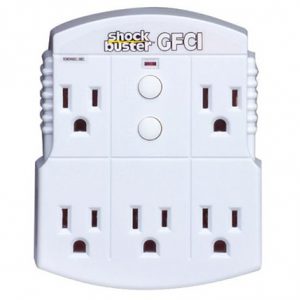-
 NMO Model A$78.00
NMO Model A$78.00 -
 NMO Model B$98.00
NMO Model B$98.00 -
 GFCI Adapter$30.00
GFCI Adapter$30.00
3 Reasons Why You Had An Overflow
NO MORE OVERFLOWS is the ONLY product available that addresses washing machine drain overflows, from a standpipe, before the flood occurs.
What has changed so that there are more overflows and floods when there used to be less?
Change #1
In most houses built before 1980, we find copper pipe, galvanized fittings, clay – ceramic – and reinforced fiber fitted sewer lines. Then sometime thereafter (depending upon your State and Local Codes) the plumbing standards changed to the current use of PVC piping for drains and sewer connections. The older type of plumbing is more susceptible to flow restrictions caused by sediment, corrosion, lint and particulate build up. Any restriction in your plumbing lines in your house to the sewer main will reduce the flow rate and volume capacity in the older piping within your house. This results in a Washing Machine Drain Overflow
Change #2
Not so long ago all washing machines had internal in-line lint filters. They were located inside the washer just before the drain outlet. Most were sealed clear containers. Since they would restrict and eventually clog with lint and particulates, preventing the washer from fully draining, appliance repair technicians were called to service the washer.
Due to the numerous filter designs, different from one model to another, replacements were not carried on the trucks. Therefore the plumber or appliance repair tech’s solution was to remove and/or bypass the filter. Machine manufacturers eventually figured this out and in an effort to reduce production cost they removed the filters. Washers now discharge lint directly into the drain pipes. More lint … more clogs and a potential washing machine drain overflow.
Change #3
Washing machine pumps are now discharging drain water much faster than older machines. The current rate is 17-22 gpm where the older rate was around 12 gpm. The benefit for the home owner is a faster wash time, more water circulations in the wash cycle – leading to cleaner clothes in less time. This higher discharge rate also requires a drain pipe with greater volume. Thus, the newer standard of a 2″ standpipe drain.
Result: A homeowner with a pre 1980’s house purchases a new washing machine and installs the drain line into his 1-1/2″ standpipe drain that already has some age related flow restrictions. The lint buildup from the new washer and the fast drain rate causes more volume & clog than the standpipe can drain and there is a washing machine drain overflow.
If you want to avoid an overflow and flood … BUY NO MORE OVERFLOWS NOW!